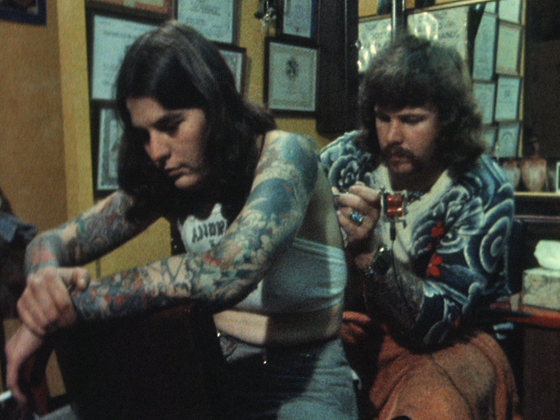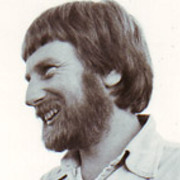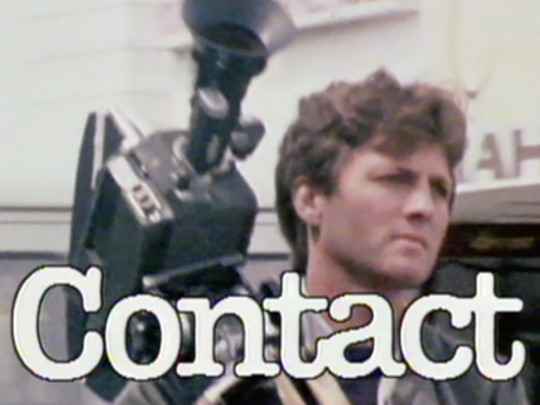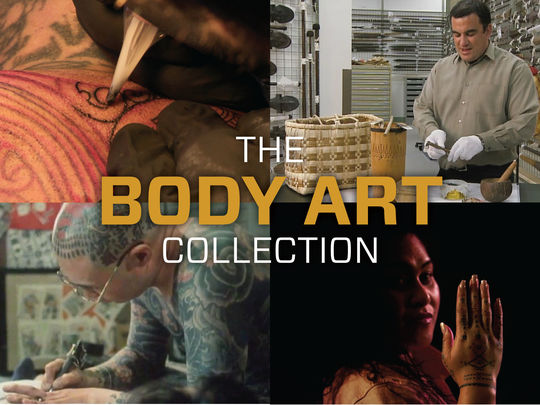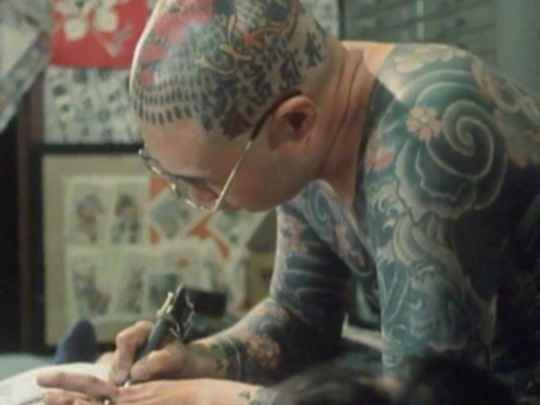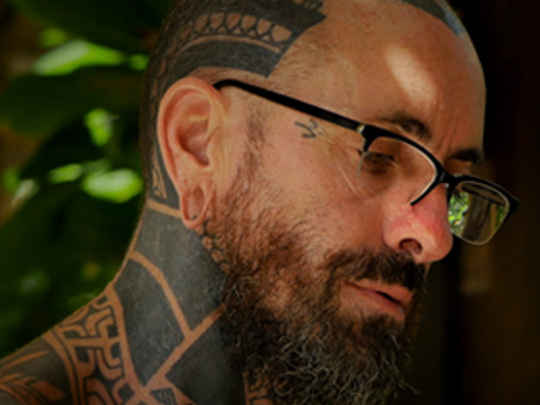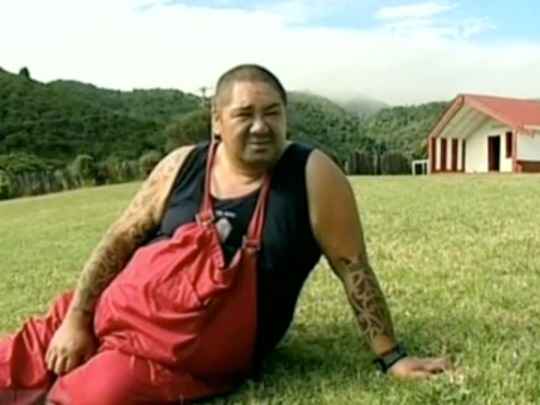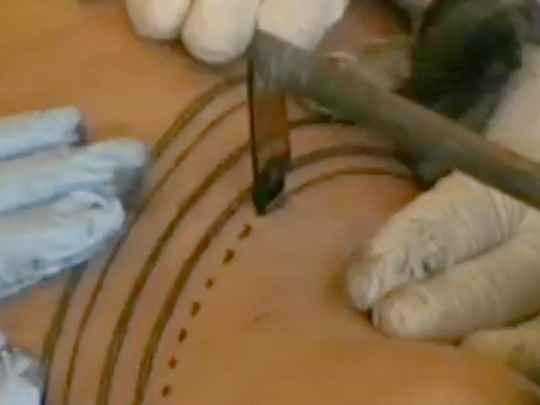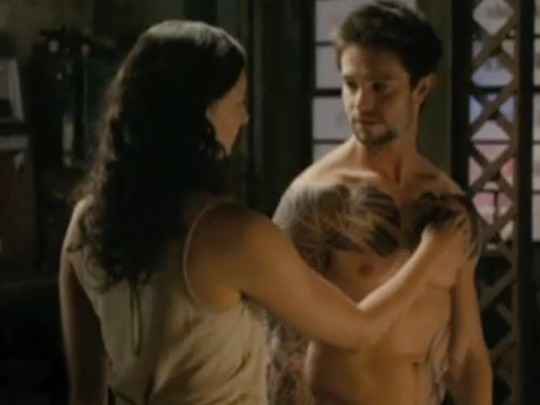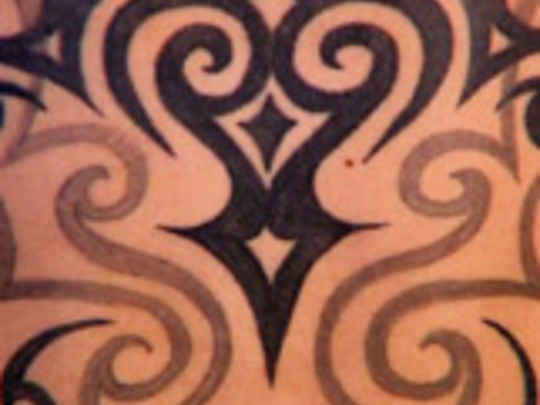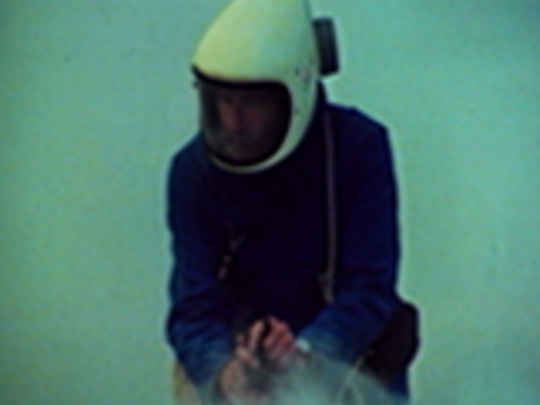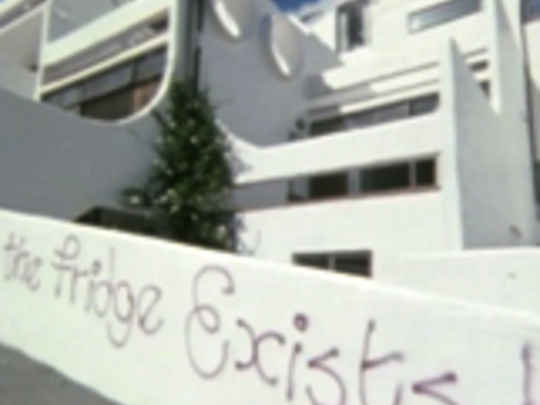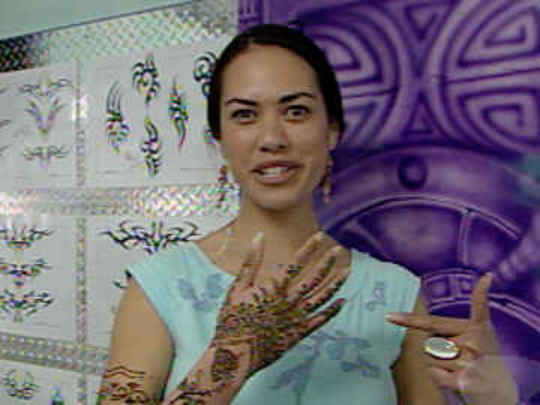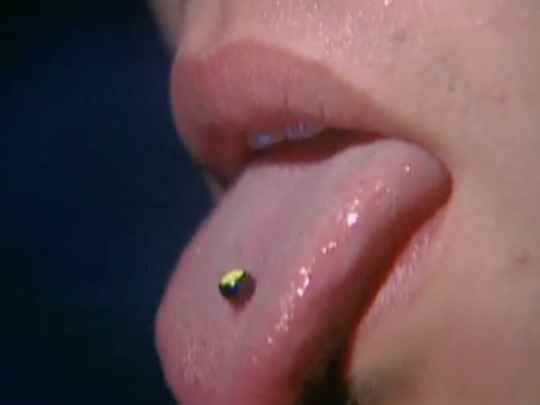Skin Pics
Television (Full Length) – 1980
Tattooing in the early 1980s
Popular culture and outsiders...I've always been interested in what's bubbling away on the edges of our society, both politically and culturally. By 1980, I had already made some documentaries on supposedly edgy subjects. Te Matakite o Aotearoa - The Māori Land March and Gung Ho - Rewi Alley of China were well received, more political examples. Skin Deep was a feature about an outsider, a woman arriving in a small rural New Zealand town.
When the powers that be at the state broadcaster (then called the Broadcasting Corporation of New Zealand) opened up a small window for us so-called 'independents' — a misnomer, since we were totally dependent on the two government-run TV channels to get in front of a wide audience — to direct some half-hour programmes, I readily took the plunge.
I had directed a couple of documentaries for the BCNZ, but this was different. This time we could use their crews and post-production facilities, and were freer in subject choice and style. I started with a half-hour film on graffiti called The Writing on the Wall (hosted by a mate, Tim Shadbolt!), and then looked around for another outsider type cultural story. Tattooing seemed like a good choice. It was visual, peopled by interesting characters, and at the time mainly hidden from the mainstream society.
Kiwi artist Paul Hartigan was making paintings of traditional tattoo flash (the off the shelf designs that adorn the walls of most parlours). At his exhibition opening I met some of those who were involved in Kiwi inking culture, and used one of Paul's original artwork as the title graphic for Skin Pics.
A brave Māori man making his own facial moko was one of the one of the interesting and trendsetting people we discovered. Spelling mistakes, discreet bluebirds and anonymous artists were all part of the story.
After Skin Pics had screened, and been generally well liked by the audience, I started to research the role that the Pacific Basin had played in the evolving story of tattoo. I realised that as New Zealanders, we were in a unique position to tell a story that had strong links to our part of the world.
Signatures of the Soul became the vehicle to tell that story. We started off with Pacific Island traditional tattooing. The word 'tattoo' is supposedly the onomatopoeic version of the 'tap tap' sound that the early sailors heard when they watched the small hammer hit the sharpened shell blades — which the island nations artists use to make their patterns. We followed the maritime routes through to current sailors getting their marks of pride in the tattoo shops surrounding the US Navy fleet’s headquarters in San Diego.
In East LA, we found Latino gangs and their black ink, prison-inspired photo realist portraits. In San Francisco we filmed with the famous Lyle Tuttle and his tattoo museum, and the contemporary artist Don Ed Hardy making large, full body works. Ed was following on from the Japanese illustrative work adopted by the mafia-like Yakuza gangs. It was an exciting and revealing shoot and we managed to get a privileged look into some closed worlds, particularly in Samoa, East LA, and with some actual Yakuza members in Yokoyama, Japan.
While we were editing the documentary I realised we had some pretty special material, and decided that we needed to give it an extra element to attract international sales. A high profile host would help with that; but we needed someone with an authentic connection to the counterculture and the "warm art" (tattooing was then becoming more accepted as an art; since skin is warm, tattooing was being called "the warm art"). In Los Angeles I’d heard that Peter Fonda of Easy Rider fame had tattoos. He definitely had the right cred, so I managed to track him down and we did a deal for him to host the show by shooting a series of links around LA that I could then drop into the edit.
"I’m a Fonda and I want to look good," was Peter’s main demand. Plus an envelope with an appropriate cash fee enclosed in it.
The first piece to camera was shot in a tattoo parlour down at Long Beach, and when word got out that we were shooting with Peter, the local chapter of the Hells Angels turned up to keep us company. It became an interesting four-day shoot, as we improvised to come up with links that could be integrated into the edited programme. We used a Japanese restaurant to do the Japan links, and tracked down the parlour where Peter had got his own small signatures of his soul.
The documentary's title comes from the opening link, where Peter talks about says tattooing being "the art form that shows the signature of the soul".
How relevant is that nowadays, when not having a tattoo seems more unique that actually having one? Only those who come out of a parlour proudly sporting their newly inked work can really answer that question.
- Geoff Steven founded filmmaking co-operative Alternative Cinema in 1972. He went on to direct documentaries and features (Skin Deep and Strata). After time as a programme commissioner at TV3 and TVNZ, he now leads Our Place - World Heritage, a photographic databank of UNESCO World Heritage Sites.
